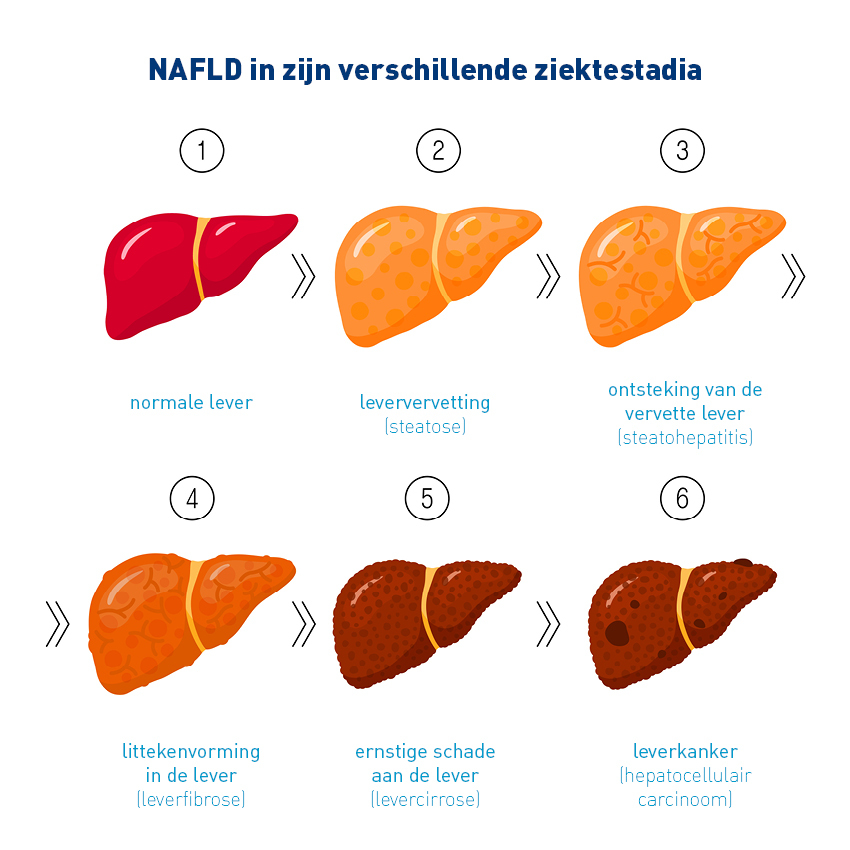The hepatic team wants to detect liver disease in its asymptomatic phase
Non-alcoholic fatty liver disease (NAFLD) is the most common hepatological condition in western countries. The growing prevalence of obesity has greatly increased the number of patients with NAFLD in recent years. We know that a patient with liver steatosis can have perfectly normal liver tests. That is why it is important to detect liver disease in the asymptomatic phase in order to slow the evolution of fibrosis to cirrhosis. That risk can be calculated using a combination of non-invasive scores based on blood tests and an elastrography (e.g. Fibroscan) that the physician performs by passing an ultrasound transducer over the patient's abdomen. This allows patients to be screened more quickly for NAFLD and a convenient risk profile can be made specifically for the patient.
Would you like more information? You can read two recent scientific articles in 'Huisartsnu':

Something wrong or unclear on this page? Report it.



